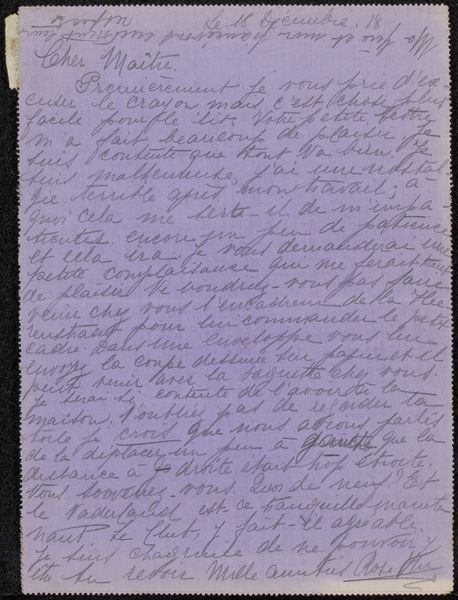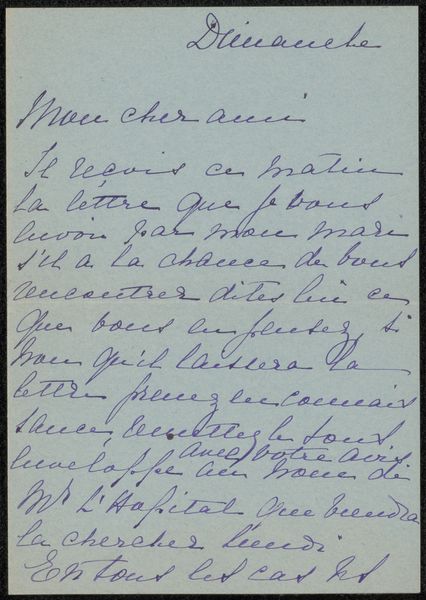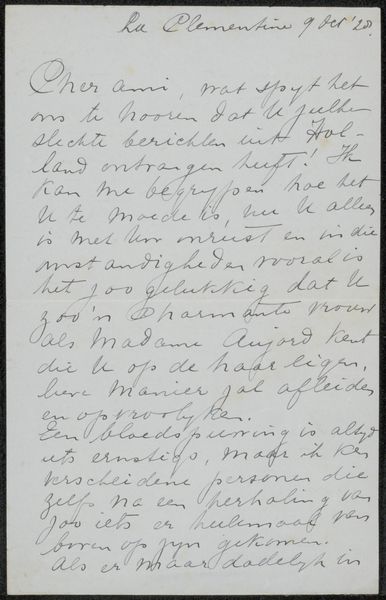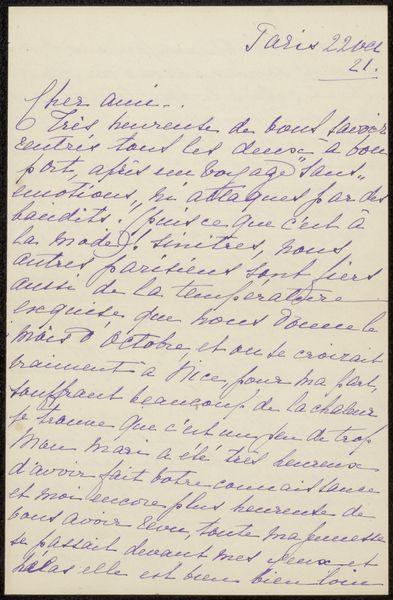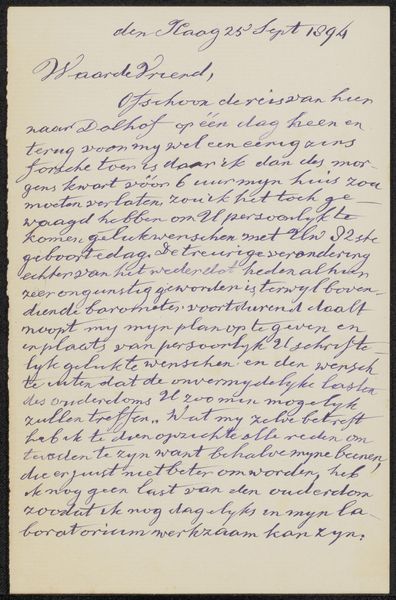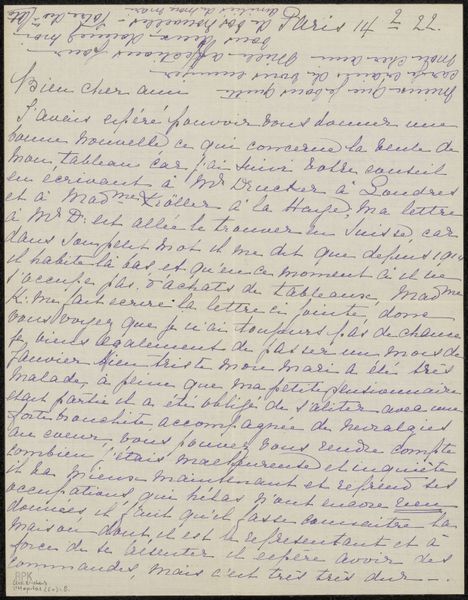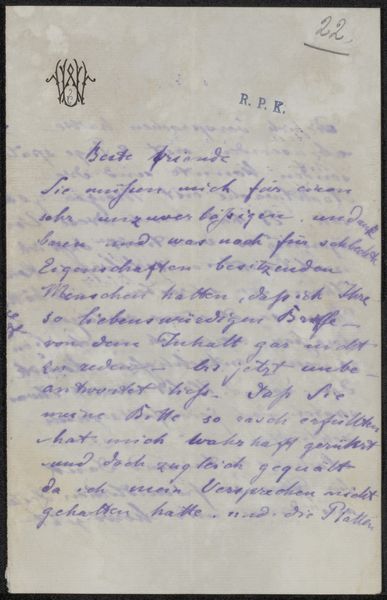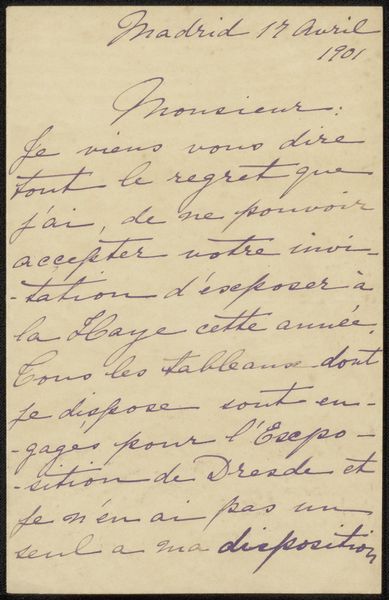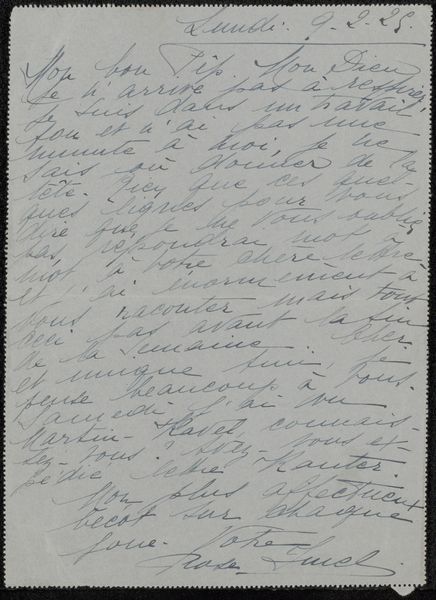
drawing, paper, ink, pen
#
drawing
#
hand-lettering
#
hand drawn type
#
hand lettering
#
paper
#
personal sketchbook
#
ink
#
hand-drawn typeface
#
hand drawn
#
fading type
#
pen work
#
sketchbook drawing
#
pen
#
sketchbook art
Copyright: Rijks Museum: Open Domain
Curator: Here we have "Brief aan Philip Zilcken," or "Letter to Philip Zilcken," a drawing possibly from 1918 by Rose Imel. It appears to be ink on paper, showcasing Imel’s distinctive hand-lettering. Editor: The entire page feels incredibly intimate, doesn't it? Like a personal diary entry, not meant for anyone's eyes but our own through a strange twist of fate. Curator: Absolutely. Letters have that power, freezing a moment in time. Imel’s choice of inscription is especially interesting given that the piece is rendered with such a personalized aesthetic. It makes the page look quite spontaneous. The use of freehand drawing and the soft purple of the surface contribute to a feeling of something fragile. Editor: Definitely. And situating it within its time, 1918, it makes one consider what this individual may have lived through, with war as a backdrop for their daily life. Does the content give hints of any war anxiety, or can you perceive this through Imel's state of mind during this period? Curator: While it is hard to deduce an absolute reading of the state of mind, what is fascinating is how Imel imbues the visual form of the text with almost a sense of… character. It goes beyond mere functionality; the hand-lettering here really feels like an emblem of expression. Editor: Yes, a sense of directness from the author to the recipient. It is as if the visual style makes it even more specific, like their relationship already exists. Perhaps, what Rose Imel expresses to us is also how female friendship allowed strength to bloom amid the difficulties they experienced during the period of World War One. It feels radically hopeful and resistant. Curator: That sense of defiant optimism certainly resonates through the piece. Imel seems to take the inscription almost as a performative act of creating intimacy within the public context of art. It reminds us how artists often weave hidden languages of sentiment into their works. Editor: So much is contained in those deliberate choices—revealing how private lives always unfold alongside major historical events. Looking at Imel’s letter, it prompts me to think more deeply about these interconnected histories and memories, public and private. Curator: Agreed. Art invites us into conversations—sometimes across vast stretches of time—sparking dialogues between the visible and the unspoken.
Comments
No comments
Be the first to comment and join the conversation on the ultimate creative platform.
